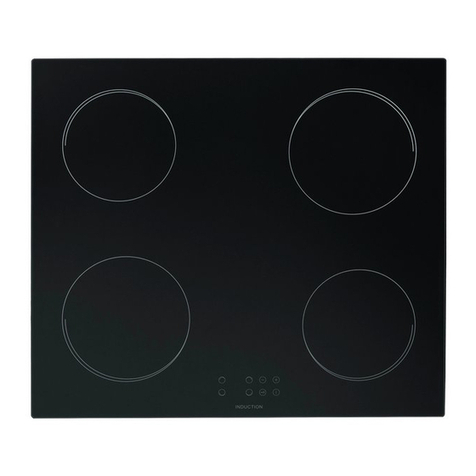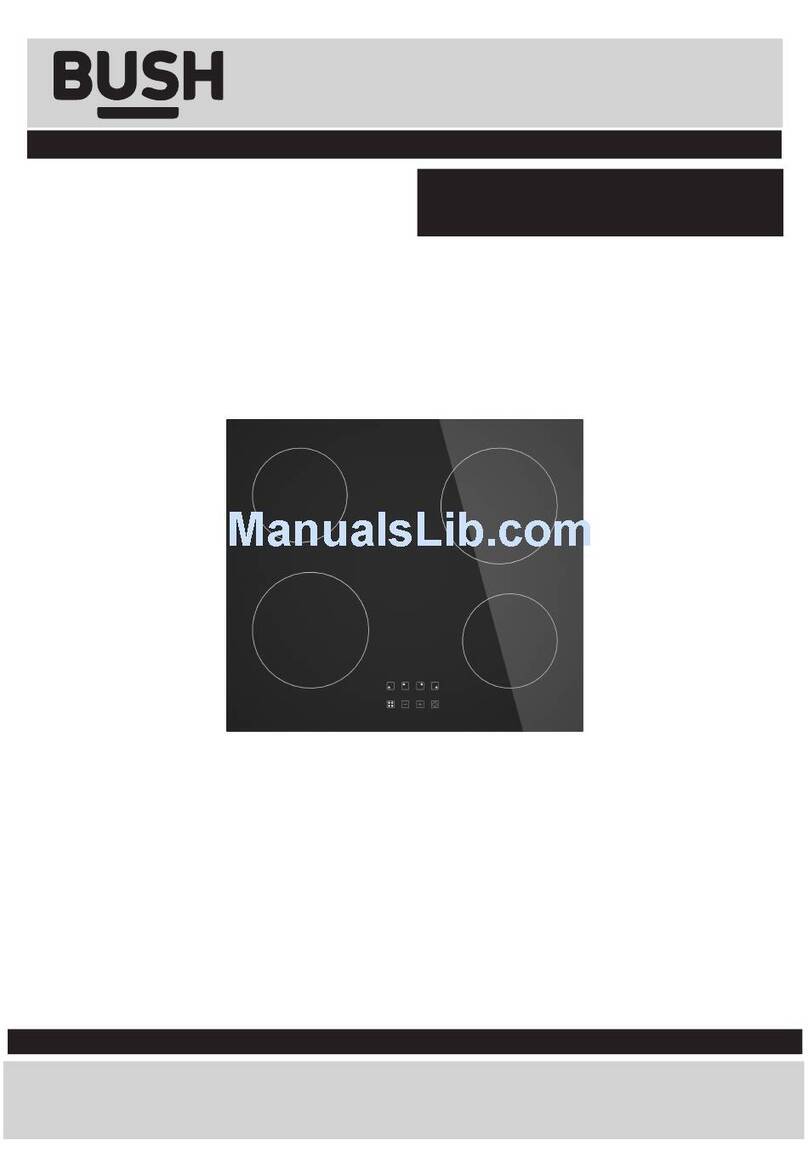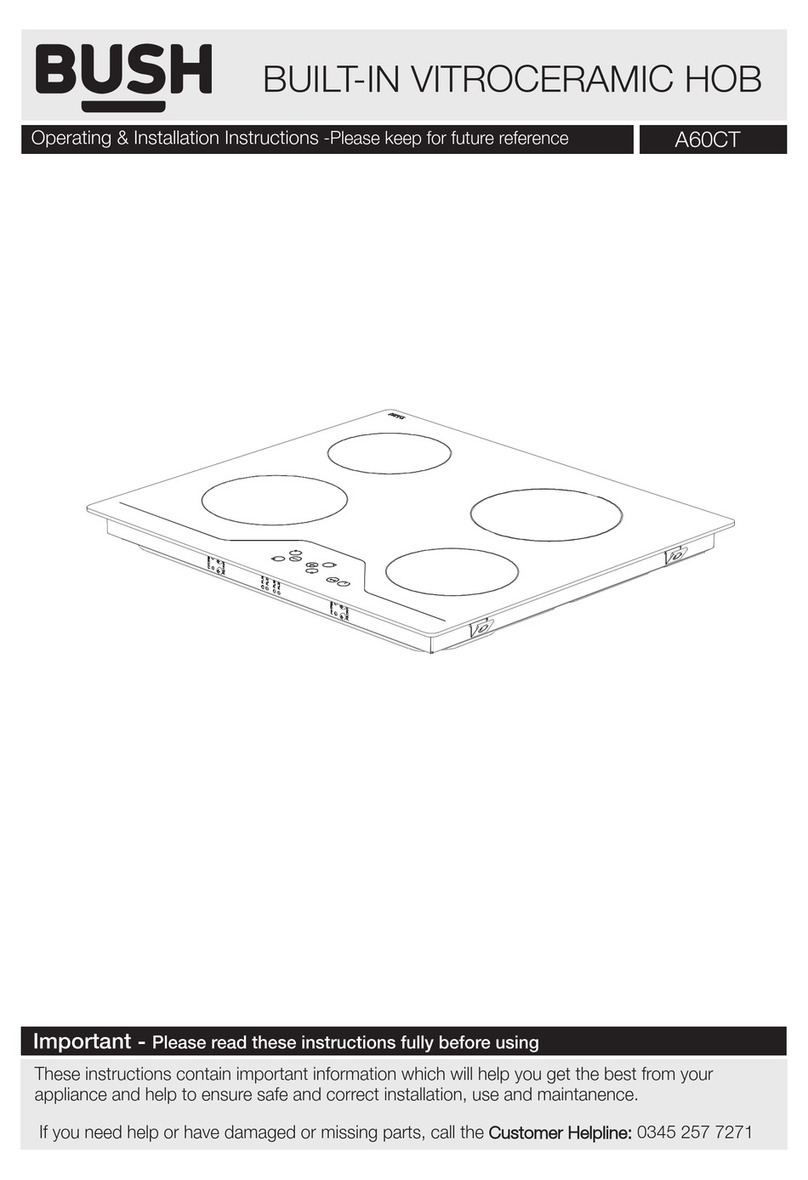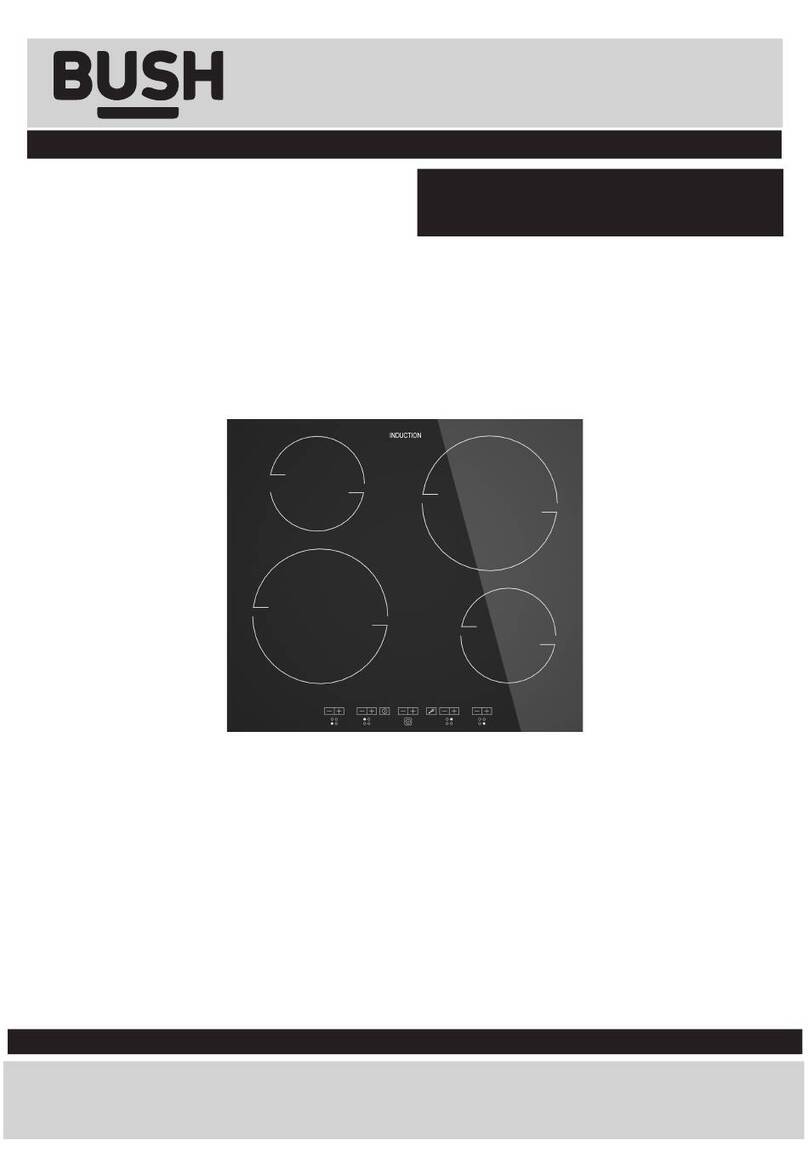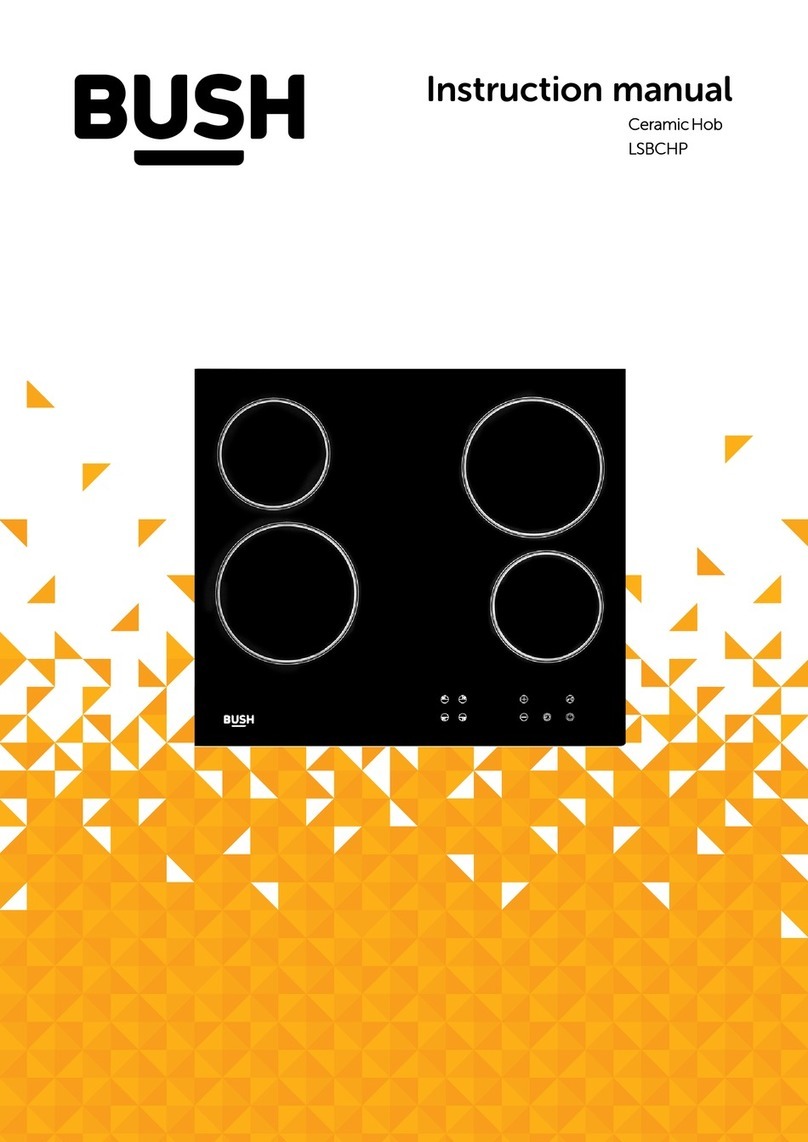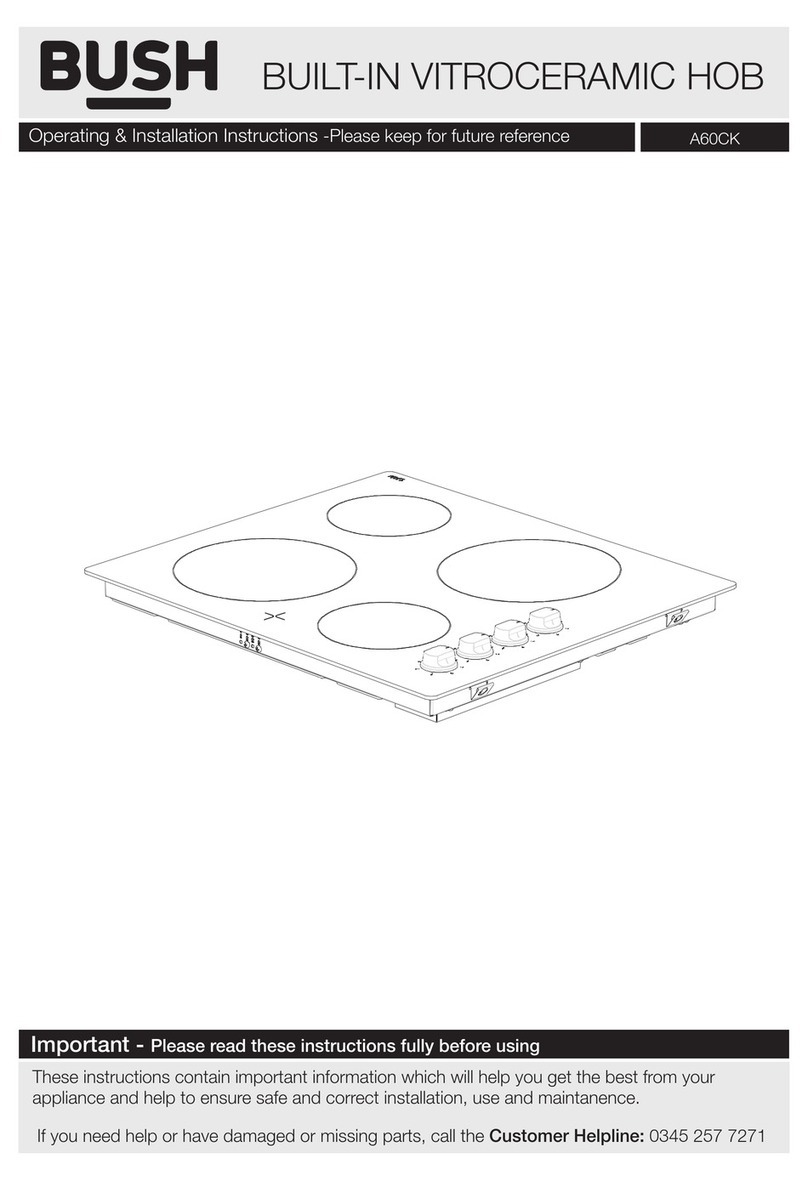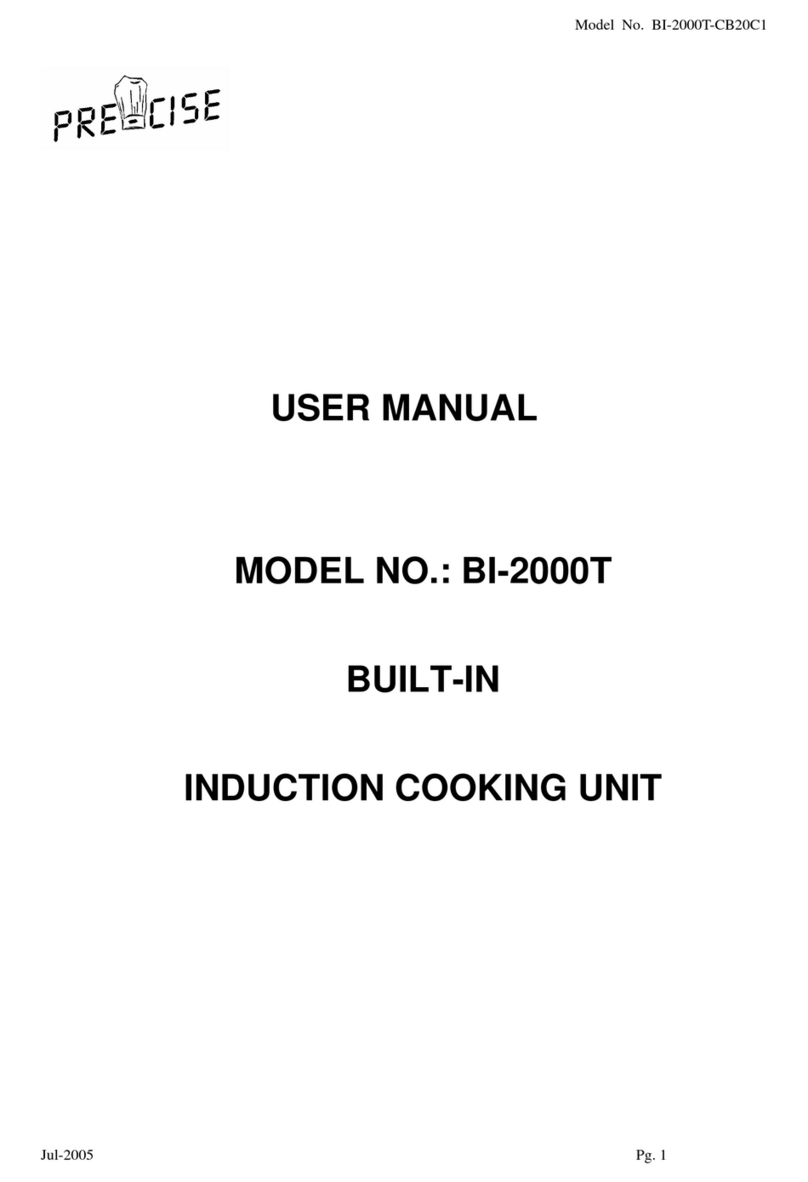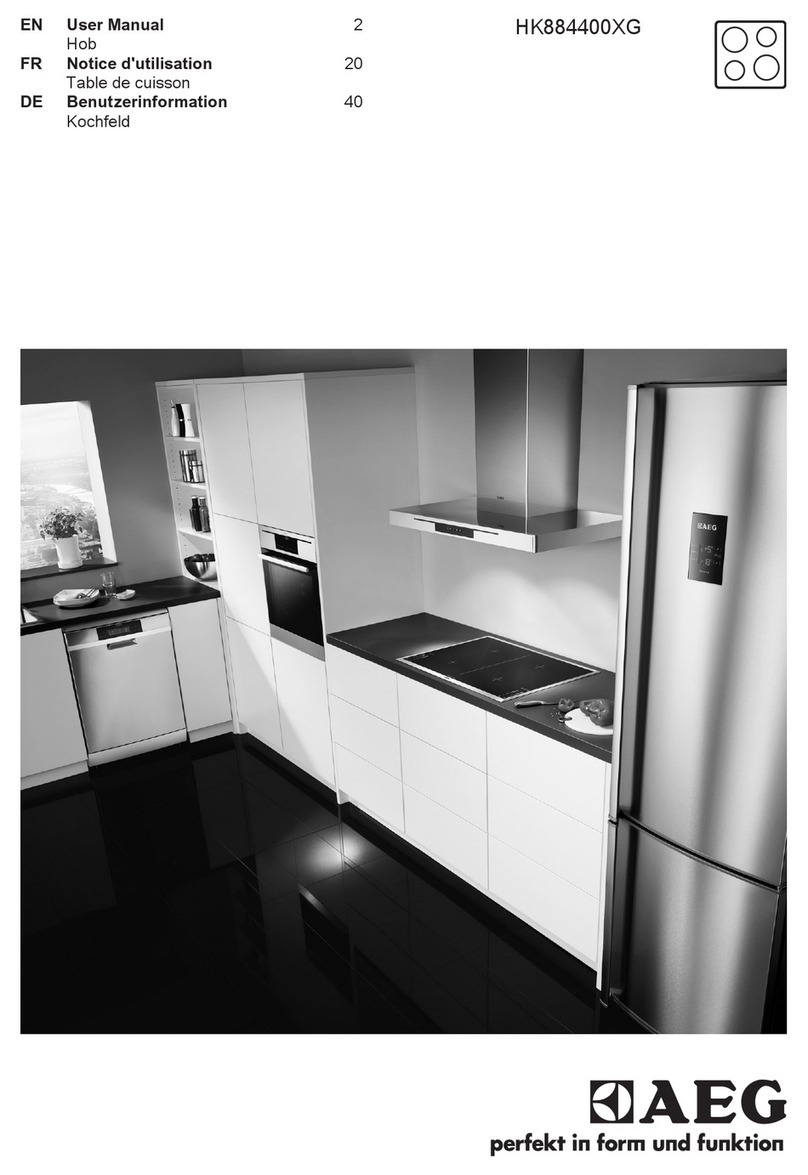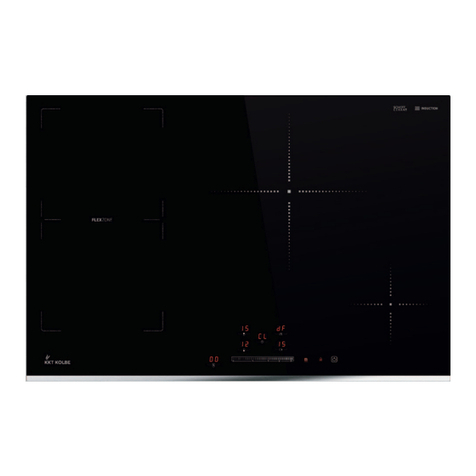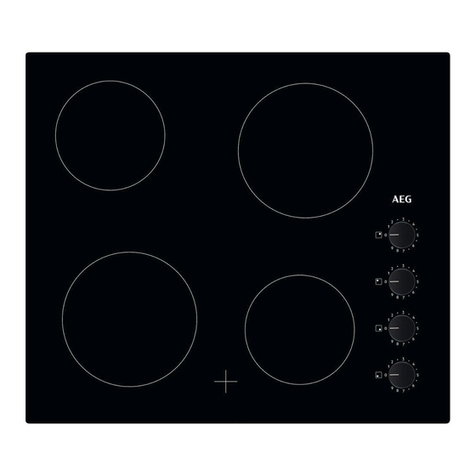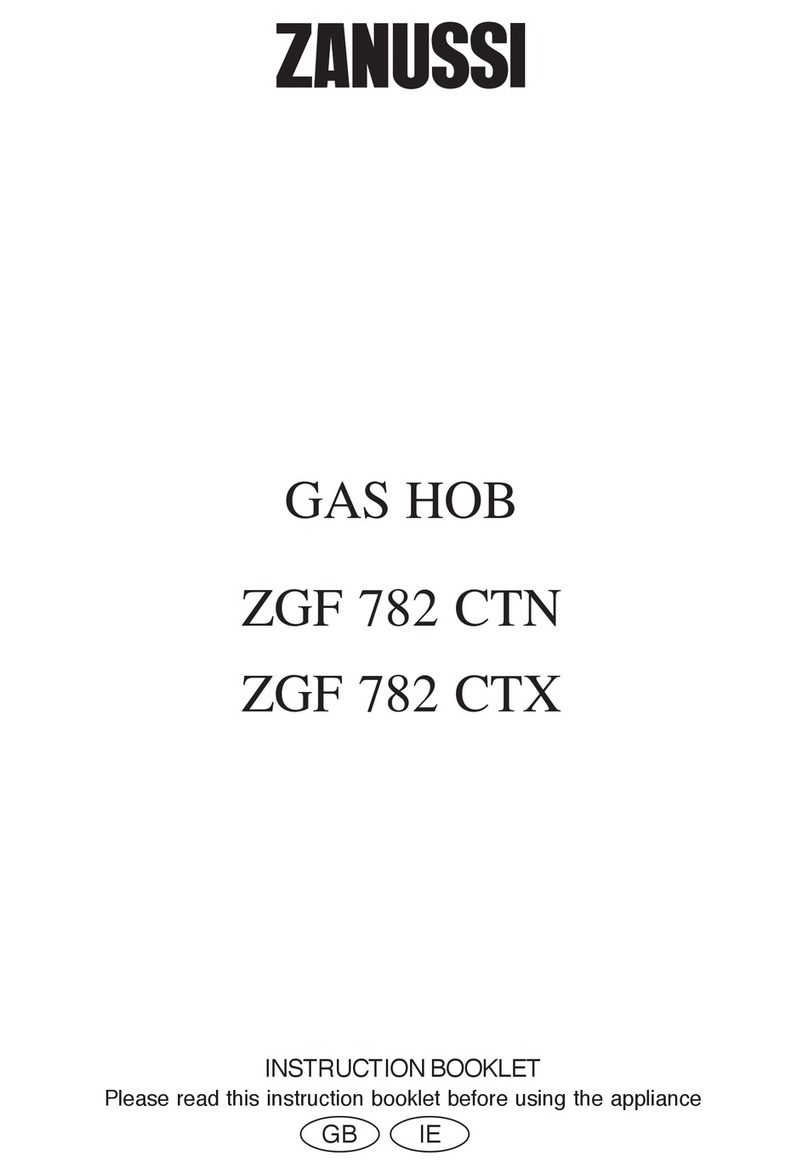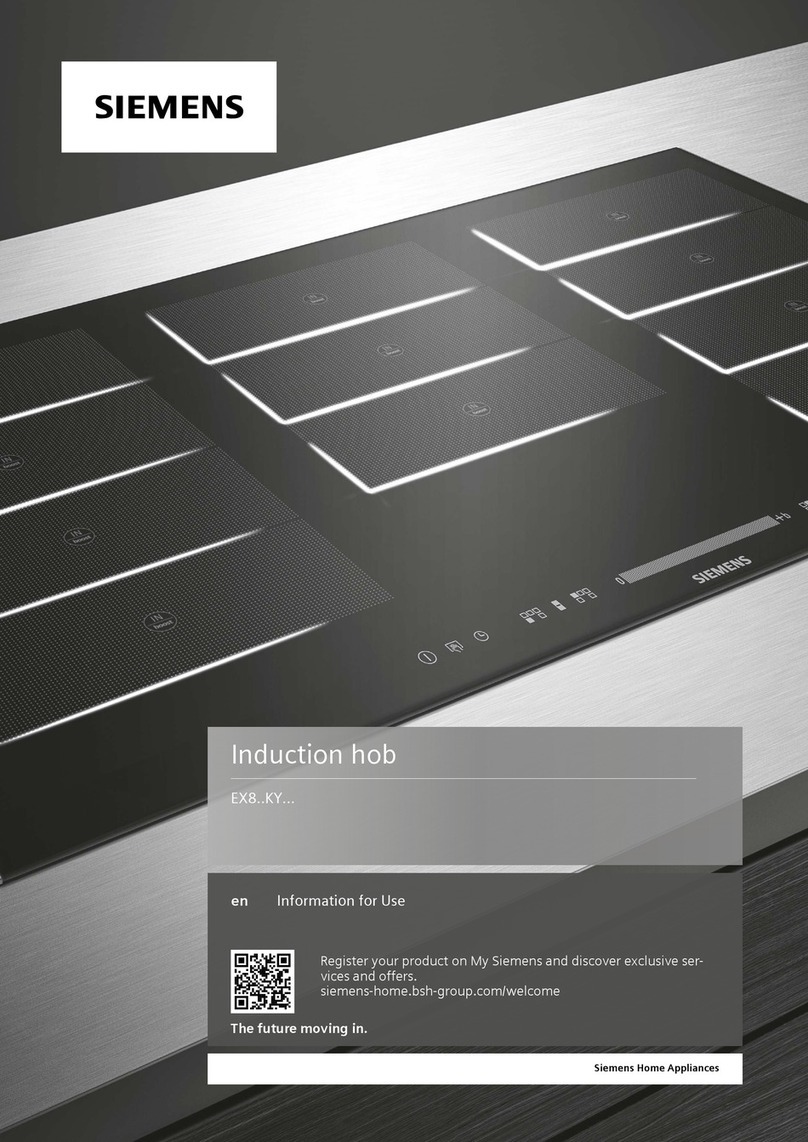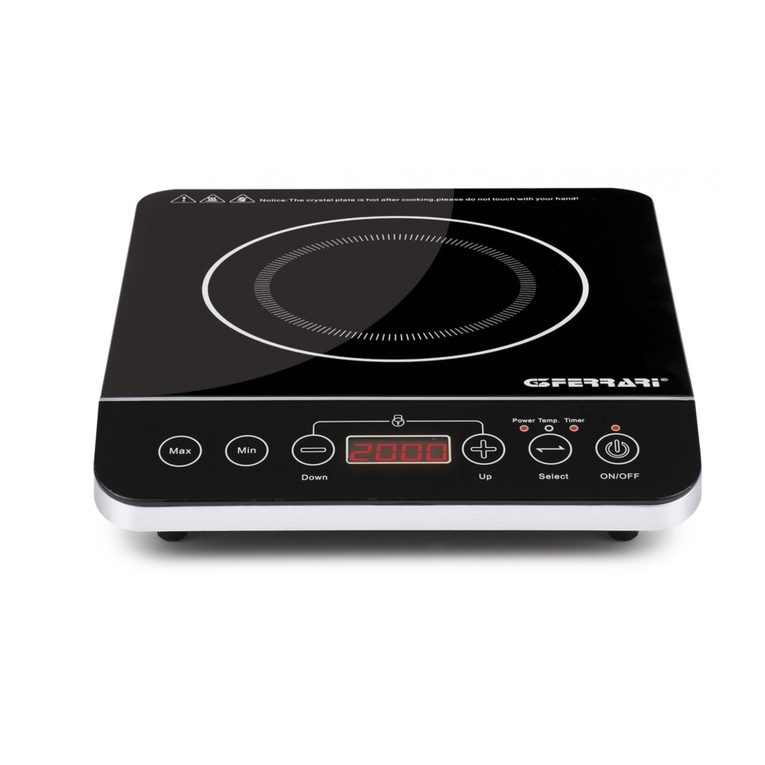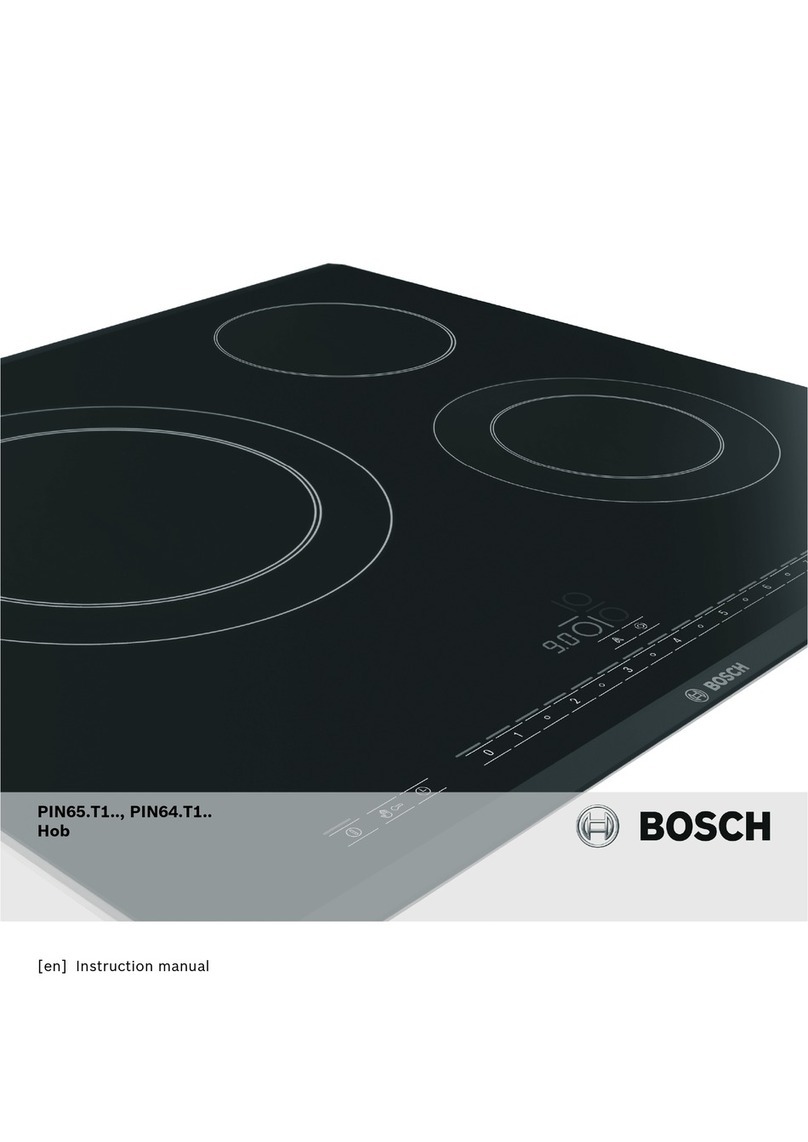
7
Electrical connection
Hobs equipped with a three-pole power supply cable are
designed to operate with alternating current at the voltage
and frequency indicated on the data plate (this is located
on the lower part of the appliance). The earth wire in the
cable has a green and yellow cover. If the appliance is
to be installed above a built-in electric oven, the electri-
cal connection of the hob and the oven must be carried
out separately, both for electrical safety purposes and to
make extracting the oven easier.
Connecting the supply cable to the mains
Install a standardised plug corresponding to the load indi-
cated on the data plate.
The appliance must be directly connected to the mains
using an omnipolar circuit-breaker with a minimum con-
tact opening of 3 mm installed between the appliance and
the mains. The circuit-breaker must be suitable for the
charge indicated and must comply with current electrical
regulations (the earthing wire must not be interrupted by
the circuit-breaker). The supply cable must not come into
contact with surfaces with temperatures higher than 50°C.
! The installer must ensure that the correct electrical
connection has been made and that it is compliant
with safety regulations.
Before connecting to the power supply, make sure that:
• The appliance is earthed and the plug is compliant
with the law.
• The socket can withstand the maximum power of the
appliance, which is indicated on the data plate.
• The voltage is in the range between the values indi-
cated on the data plate.
• The socket is compatible with the plug of the appli-
ance. If the socket is incompatible with the plug, ask
an authorised technician to replace it. Do not use ex-
tension cords or multiple sockets.
! Once the appliance has been installed, the power
supply cable and the electrical socket must be easily
accessible.
! The cable must not be bent or compressed.
! The cable must be checked regularly and replaced
by authorised technicians only (see Assistance).
! The manufacturer declines any liability should these
safety measures not be observed.
Gas connection
The appliance should be connected to the main gas sup-
ply or to a gas cylinder in compliance with current national
regulations. Before carrying out the connection, make
sure the cooker is compatible with the gas supply you
wish to use. If this is not the case, follow the instructions
indicated in the paragraph “Adapting to different types of
gas.”
When using liquid gas from a cylinder, install a pressure
regulator which complies with current national regulations.
Connection with a rigid pipe (copper or steel)
! Connection to the gas system must be carried out in
such a way as not to place any strain of any kind on
the appliance.
There is an adjustable L-shaped pipe tting on the ap-
pliance supply ramp and this is tted with a seal in order
to prevent leaks. The seal must always be replaced after
rotating the pipe tting is a threaded 1/2 gas cylindrical
male attachment.
Connecting a exible jointless stainless steel pipe to a
threaded attachment
The gas supply pipe tting is a threaded 1/2 gas cyl-
indrical male attachment.
These pipes must be installed so that they are never
longer than 2000 mm when fully extended. Once connec-
tion has been carried out, make sure that the exible
metal pipe does not touch any moving parts and is not
compressed.
! Only use pipes and seals that comply with current
national regulations.
Start-up and use
